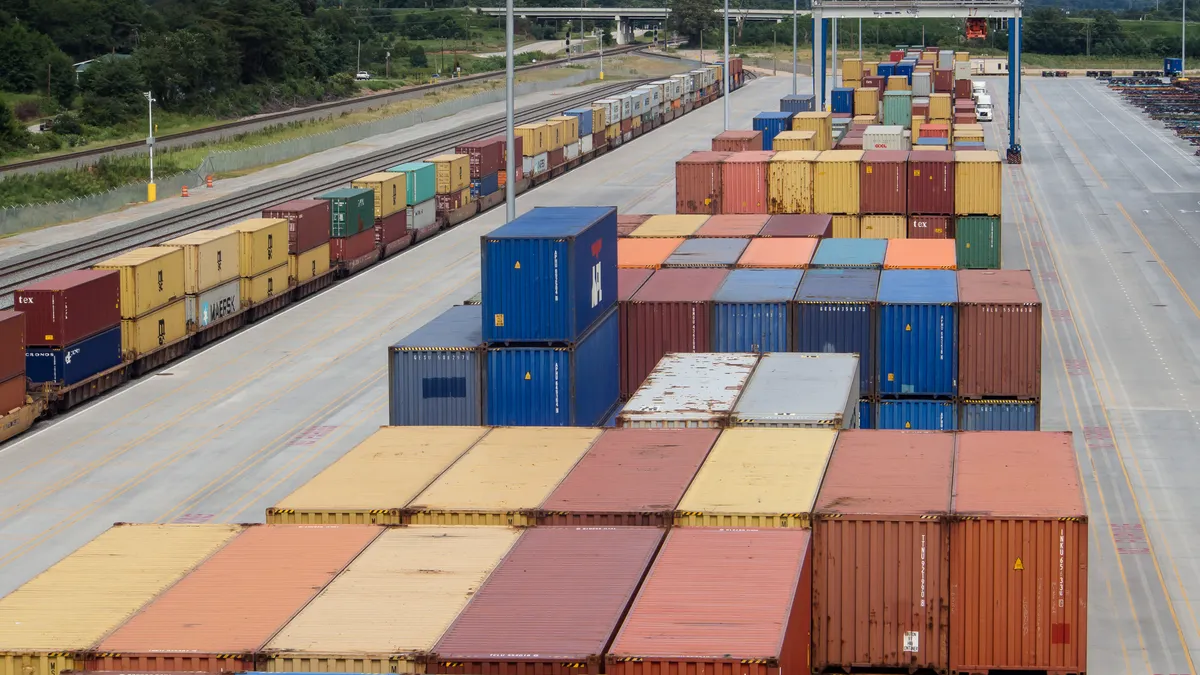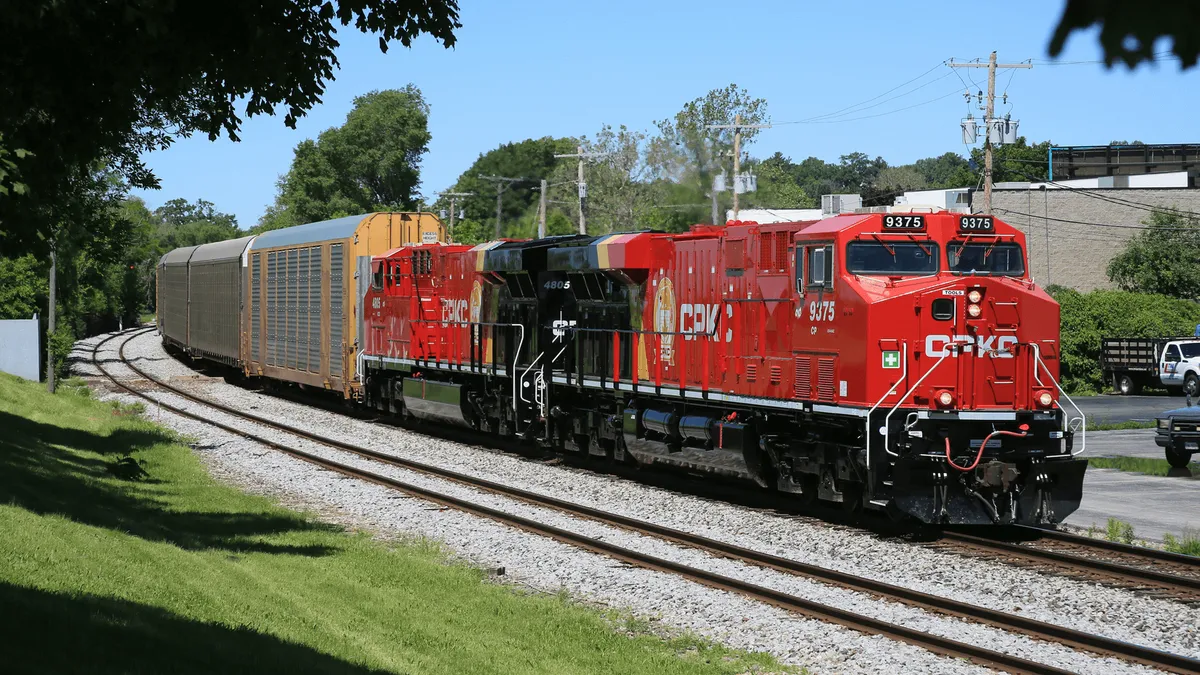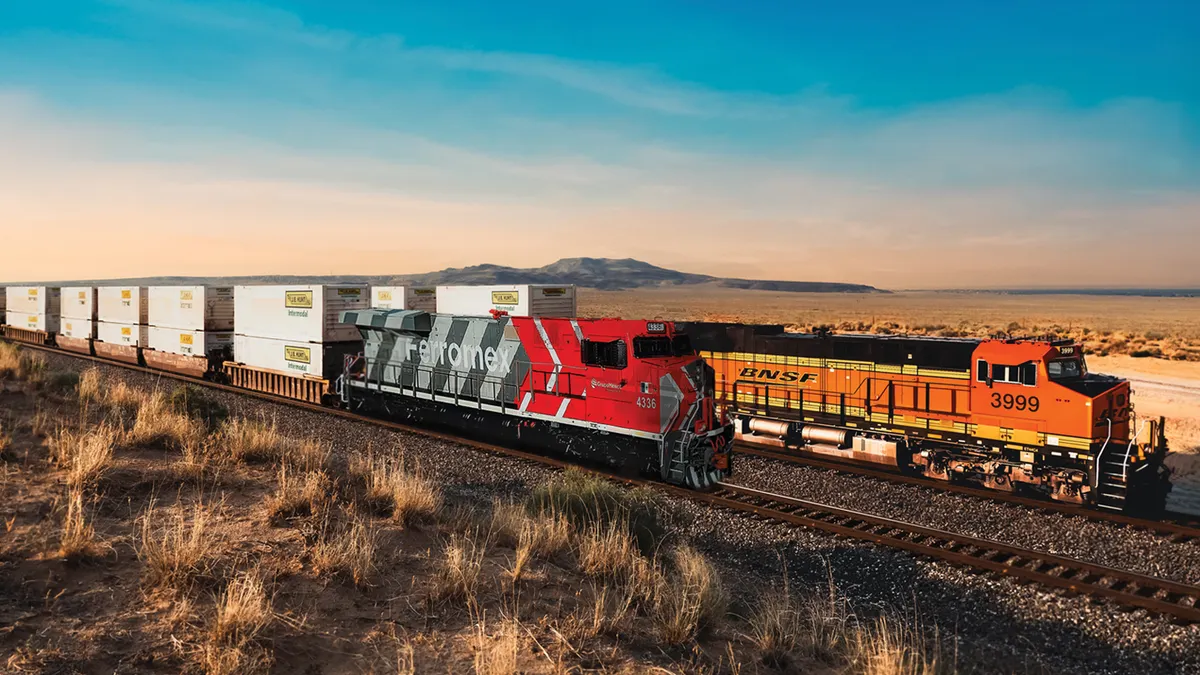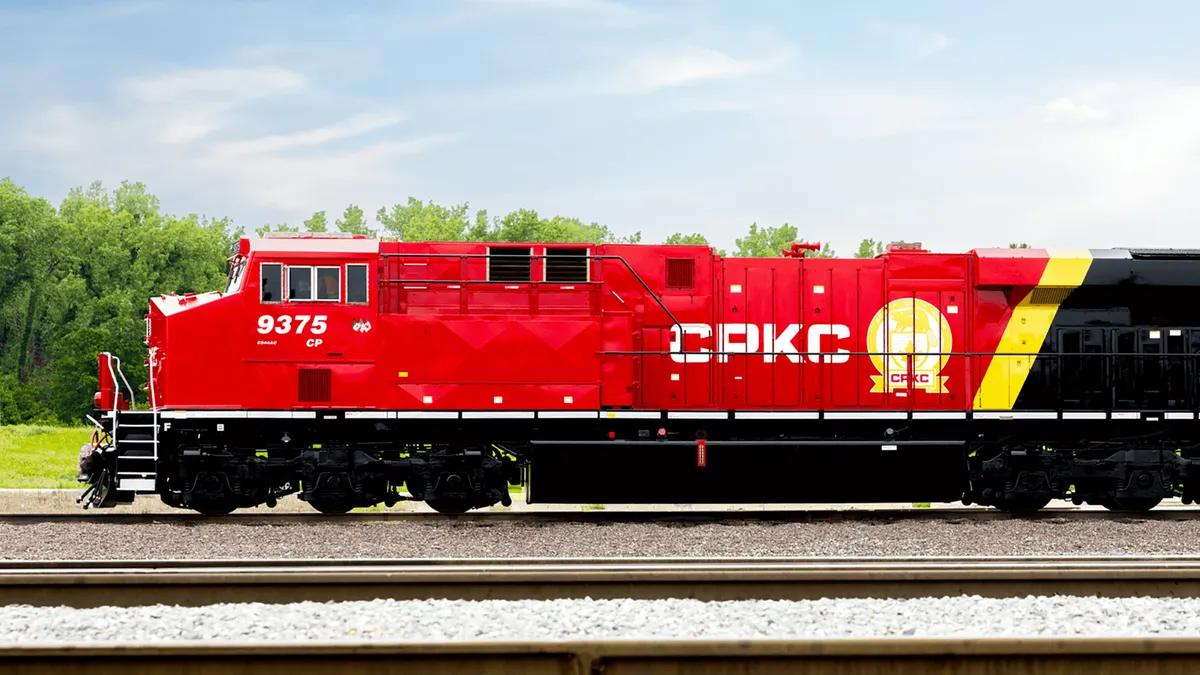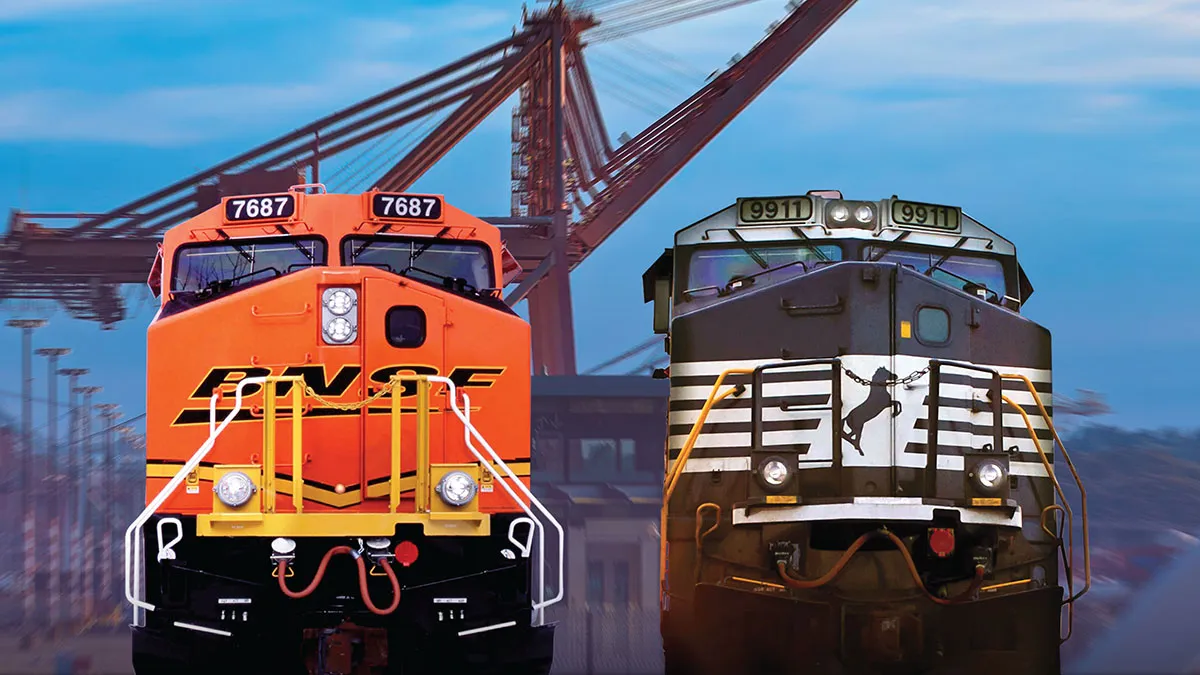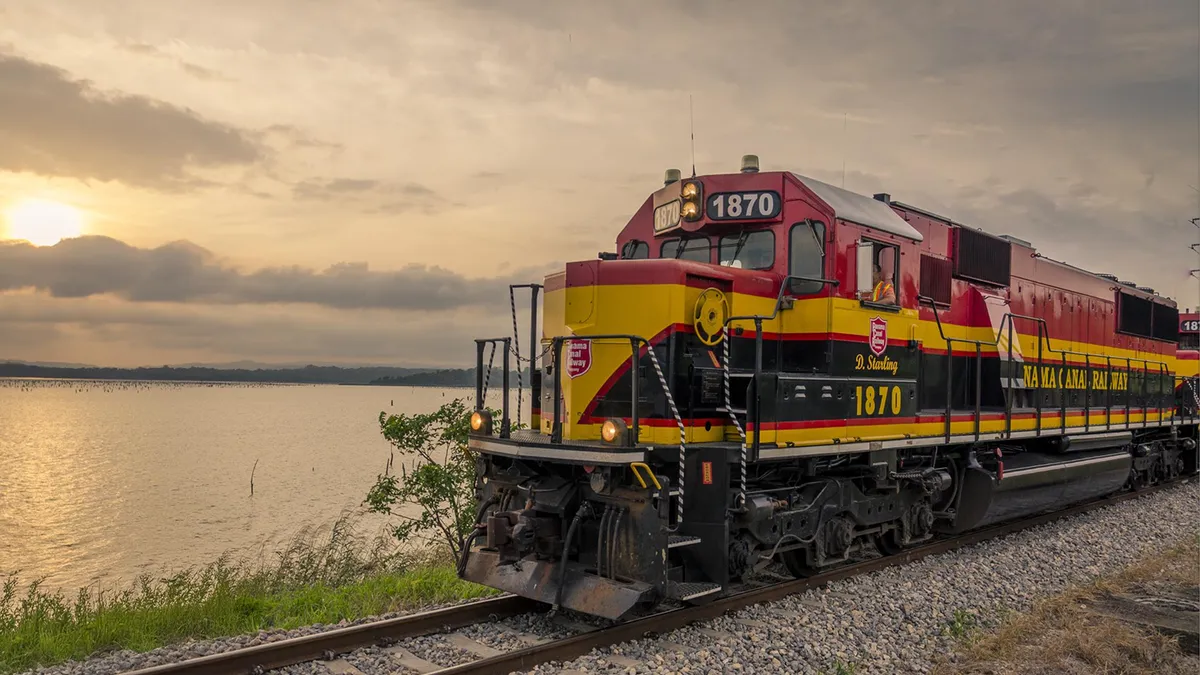Major U.S. railroads laid out plans to build up their workforces and restore service in response to complaints from shippers of long delays, unfilled orders and other escalating disruptions.
The Surface Transportation Board ordered senior executives from Union Pacific, BNSF, CSX and Norfolk Southern to attend a two-day hearing and present short and long-term plans to restore service. But as many railroads noted, it will likely take months to clear congestion due to higher volumes, labor constraints and the time it takes to onboard workers.
"With the amount of congestion currently on the network it will likely take us the better half of the year to decongest the network," said Eric Gehringer, executive vice president of operations.
Still, federal regulators cast doubt on railroads' plans as they weigh whether to take further steps to intervene and provide relief for shippers. STB chairman Marty Oberman questioned whether railroads were adequately prepared to handle a surge in demand after years of cuts to the workforce, including just as the pandemic began.
"I'm having a lot of trouble with this — that you've dropped thousands of employees when the pandemic began, apparently without any notion that you might have to gear up," Oberman said following Union Pacific's testimony.
Here's what railroads had to say during the STB's hearing on rail service declines, and how executives plan to respond to congestion.
Union Pacific
Union Pacific is asking shippers to voluntarily reduce inventory as the railroad plans to remove anywhere from 2% to 4% of its own cars from the network.
"We are taking an aggressive approach to reducing operating inventory — more aggressive than in the past," said Gehringer.
The railroad has noted that it could begin to meter traffic if shippers do not voluntarily reduce inventory. Union Pacific has limited traffic before, restricting shipments for a week last summer into its Global IV gateway in Chicago to clear out congestion.
"Metering traffic will allow Union Pacific to control the number of cars on the network while simultaneously serving all customers by resolving the congestion," said Gehringer.
Union Pacific is asking shippers with the highest impact on its network to reduce inventory as the railroad is dealing with over 20,000 excess cars on its network, Gehringer said. During the hearing, fertilizer shippers noted they had been asked to cut inventories by 20%. Pilot Flying J, a shipper of diesel exhaust fluid, said it was asked to cut shipments by 26%, and then further reduce inventories by another 50%.
Union Pacific has also added 100 locomotives to further add fluidity to its network. The railroad is additionally repositioning crew to areas seeing increased demand as the company plans to hire 1,400 train service employees this year.
BNSF
BNSF is also asking shippers to reduce inventory as the railroad looks to temporarily reduce the overall number of cars on its network by 2%.
"As our velocity slowed with increased demand, there was an understandable reaction from our customers to add more cars on the network in hopes that they would quickly increase their chances of getting their shipment," said Matt Garland, vice president of transportation. "Unfortunately, adding cars to the network has the opposite result."
Garland said the railroad has 5% more cars online compared to last year, but is moving 3% less volume. BNSF also plans to add 100 locomotives in the coming weeks and will add 1,700 train and engine employees in 2022.
Still, BNSF expects service in the next 30 days to be "somewhat choppy," according to Garland. It will take at least a month to "start feeling first positive effects in larger hiring classes as they start to graduate."
CSX
CSX is primarily focused on rebuilding its labor force, with CEO and President Jim Foote saying "there is no other reason why the company is not performing other than we do not have conductors on the trains."
The railroad has increased trainee pay by 40% and is offering gift cards and other perks to expand the size of its training class. Still, the company doesn't expect its train and engineer employment numbers to return to pre-pandemic levels until the third quarter.
To deal with short-term constraints, the railroad introduced a voluntary six month transfer program, offering bonus pay to workers willing to work in areas experiencing higher demand. It's also piloting ways to increase communication with shippers about the railroad's hiring progress growth.
CSX has additionally been working with individual shippers to resolve service complaints, revising operations and in some cases assigning dedicated crews to complete first and last mile service.
Foote, however, pushed back against some of the short-term measures suggested by shippers and labor unions to improve service — including ideas to shorten the length of trains and restrict idling of trains once they reach a certain speed.
"If you want to double the number of trains ... you're going to need twice as many employees. Simple as that," said Foote. "We all need to get people on the locomotives. That's the problem. We're working on it. We're addressing it and we'll be there in a matter of months not years."
Norfolk Southern
Norfolk Southern is using technology to lower car dwell and increasing collaboration between departments to enhance performance and improve cycle times at terminals.
The railroad is also collaborating with individual shippers to resolve service problems, with CMO Ed Elkins noting its worked with one large steel producer "on a day in day out basis to develop innovative solutions to address the challenges in our own service."
Norfolk Southern has also streamlined the hiring process and increased trainee pay in a bid to add more workers to its network. The company has hired more conductor trainees in the first quarter of this year than it did all of last year, according to Chief Transformation Officer Annie Adams.
COO Cindy Sanborn also warned regulators that some service solutions offered by shippers could create new inefficiencies and issues within the network, hurting the rail industry's ability to compete with trucking.
"I don't believe we are facing a problem with an operating model," said Sanborn. "We are facing an execution problem ... we must devote our energies to putting the resources in place to solve that problem, not return to a way of doing things whose time has passed."



